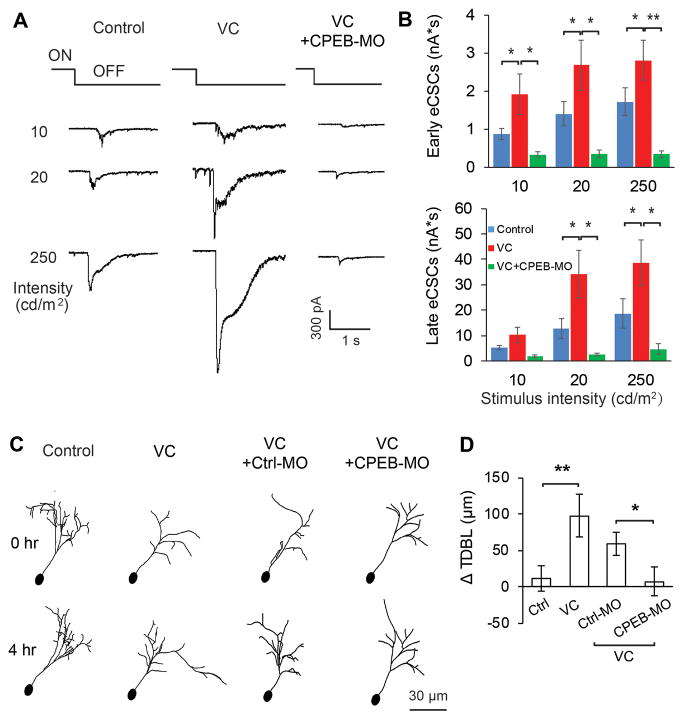Figure 7.
Conditioning-dependent synaptic and structural plasticity requires acute CPEB synthesis
A. Visual stimulus-induced excitatory compound synaptic currents (eCSCs) from control, VC and VC + CPEB-MO animals at light intensities of 10, 20, 250 cd/m2. B. VC-induced increases in early (<100ms) and late (>100ms) components of CSCc are significantly inhibited by CPEB-MO. Control and Ctrl-MO data were combined because they are not significantly different (Early eCSCs (nA*s): 10 cd/m2: Control = 0.88±0.24nA; Ctrl-MO = 0.87±0.21nA, P=0.97; 20 cd/m2: Control = 1.91±0.68nA; Ctrl-MO = 1.02±0.19nA, P=0.26; 300 cd/m2: Control = 2.47±0.73nA; Ctrl-MO = 1.15±0.22nA, P=0.14. Late eCSC’s: 10 cd/m2: Control = 4.74±1.63nA; Ctrl-MO = 5.57±1.04nA, P=0.66; 20 cd/m2: Control = 20.34±8.9nA; Ctrl-MO = 7.18±1.32nA, P=0.12; 300 cd/m2: Control = 29.45±12.33nA; Ctrl-MO = 10.52±3.39nA, P=0.12.). MO’s were electroporated 2 h before recording. N=7–8 neurons/group) C. Drawings of representative neurons imaged in vivo over 4 h in animals exposed to ambient light, VC, VC+Ctrl-MO and VC+CPEB-MO. MO’s were electroporated 2 h before imaging. D. VC significantly increases total dendritic branch length (TDBL) in control and Ctrl-MO neurons, but not in CPEB-MO neurons. *P<0.05; **P<0.01.

